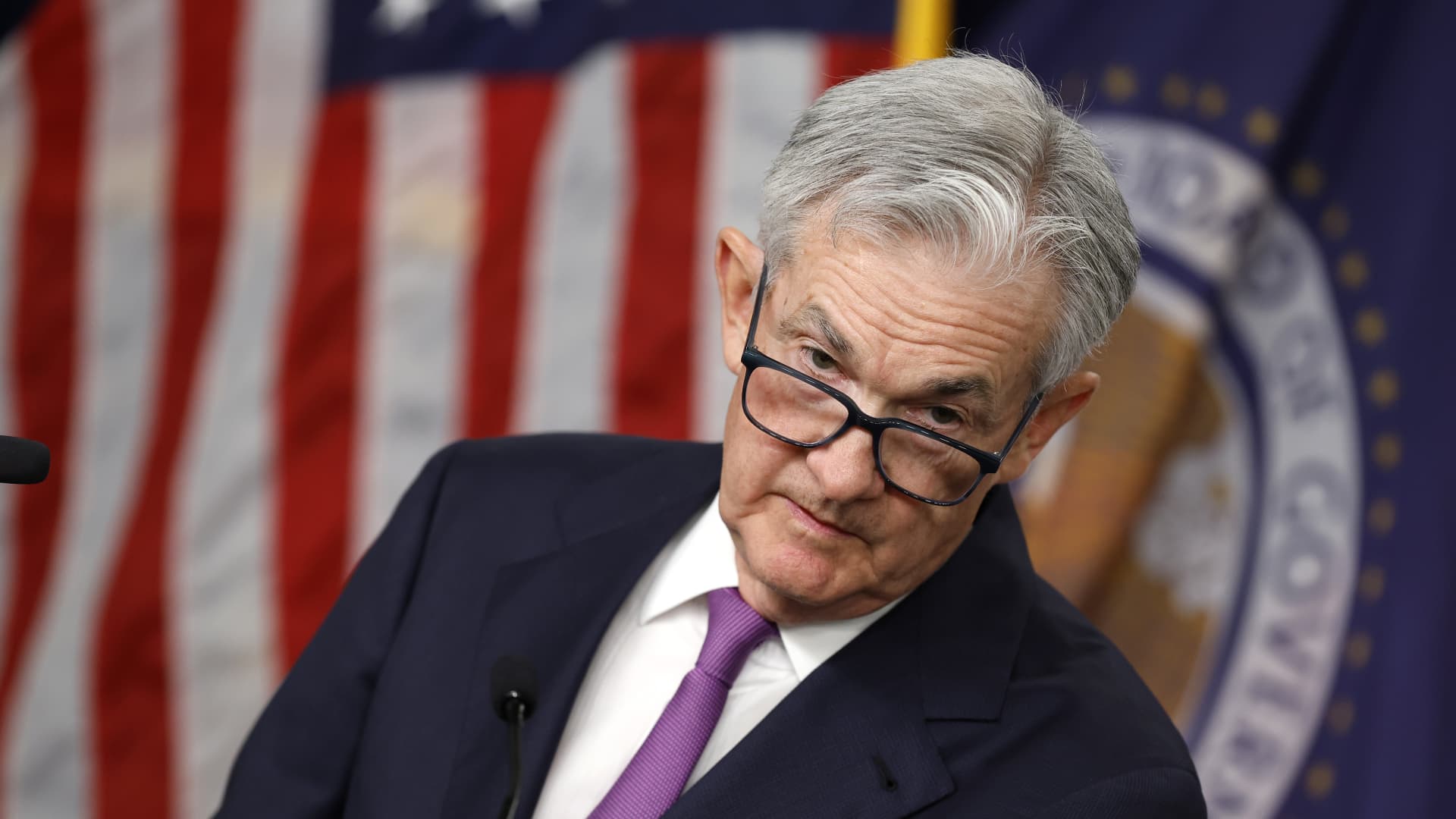Federal Reserve Board Chairman Jerome Powell speaks during a news conference after a Federal Open Market Committee meeting on September 20, 2023 at the Federal Reserve in Washington, DC.
Chip Somodevilla | Getty Images News | Getty Images
This report is from today’s CNBC Daily Open, our new, international markets newsletter. CNBC Daily Open brings investors up to speed on everything they need to know, no matter where they are. Like what you see? You can subscribe here.
What you need to know today
Recoiling from dot plot
U.S. markets slumped and Treasury yields rose to their highest levels in more than 16 years after the Fed indicated there’s one more hike on the table. Europe’s Stoxx 600 added 0.91%, with all major bourses in the region registering gains. Auto stocks rose 2% after U.K. Prime Minister Rishi Sunak pushed back the ban on the sale of new gasoline and diesel cars from 2030 to 2035.
Initial signs are shaky
Instacart shares sank 10.68% on their second day of trading, closing at $30.10 — that’s only 10 cents more than their initial public offering price. Meanwhile, Klaviyo shares jumped 9.2% on their first day of trading on the New York Stock Exchange. Last, shares of Arm continued sliding, losing 4.1% — famed tech investor Cathie Wood said she didn’t participate in Arm’s IPO because it looked overvalued.
Cooler-than-expected U.K. inflation
U.K. inflation for August came in at 6.7% for the year, lower than the expected 7%. On a monthly basis, the consumer price index rose by a mere 0.3% against the 0.7% forecast. Those unexpectedly cool readings have thrown the Bank of England’s next move into question. Markets were pricing in an 80% chance of a rate hike on Thursday, but that chance has dropped to 57% at 12 p.m. London time.
[PRO] Oil at $100 soon?
What traders thought was inevitable has finally been called by one bank: Goldman Sachs has raised its 12-month oil price forecast to $100 per barrel. Saudi Arabia and Russia plan to cut oil supply until December this year, causing a spike in prices in recent weeks. But Saudi Arabia’s Energy Minister Prince Abdulaziz bin Salman said the cuts are not about “jacking up prices.”
The bottom line
As expected, the Federal Reserve declined to increase interest rates. But it put the possibility of one last hike on the table. And rate projections for 2024 and beyond were higher than expected. In June, the Federal Open Market Committee forecast four rate cuts next year, totaling one percentage point. That’s dropped to two cuts in the latest dot plot, putting rates around 5.1%.
Try to see that from a glass-half-full perspective. That’s what Fed Chair Jerome Powell seems to be suggesting, at least.
“Broadly, stronger activity means we have to do more with rates, and that’s what that meeting is telling you,” Powell said. In other words, it’s not inflation keeping rates high — even though Powell emphasized “the process of getting inflation sustainably down to 2% has a long way to go.” It’s an economy that’s expanding faster than the Fed had expected.
Indeed, central bankers sharply revised up their Summary of Economic Projections. At their June meeting, the Fed thought gross domestic product would increase 1% in 2023. That expectation’s more than doubled to 2.1%. For 2024, the Fed also raised its growth forecast from 1.1% to 1.5%.
That might be why FOMC members think rates would remain around 2.9% in 2026. That’s higher than the so-called neutral rate (of 2.5%, according to the Fed) that neither crimps nor encourages economic growth, suggesting there’s a possibility the U.S. economy will continue to run hotter than anticipated even then.
Still, Powell warned against assuming a soft landing — where inflation is quashed while the economy hums along happily — is a “baseline expectation,” as a reporter put it at the press conference.
Despite the prognostications of robust economic growth, markets focused on the “higher rates for longer” part of the dot plot, seeing the glass as half empty.
The S&P 500 slid 0.94%, the Dow Jones Industrial Average lost 0.22% and the tech-heavy Nasdaq Composite slumped 1.53%, weighed down by a wave of rate-sensitive tech stocks closing in the red. Meanwhile, the yield on the U.S. 2-year Treasury jumped to its highest level since July 2006, while the 10-year yield reached a high not seen since November 2007.
The hope is that this is a temporary slump in financial markets. After all, economic expansion means more room for corporate profits to grow. As third-quarter earnings season kicks in soon (yes, it’s that time of the year again!), we’ll find out if markets can shake off the ghost of future interest rates and focus on the growth of the here and now.
— CNBC’s Jeff Cox and Yun Li contributed to this report

